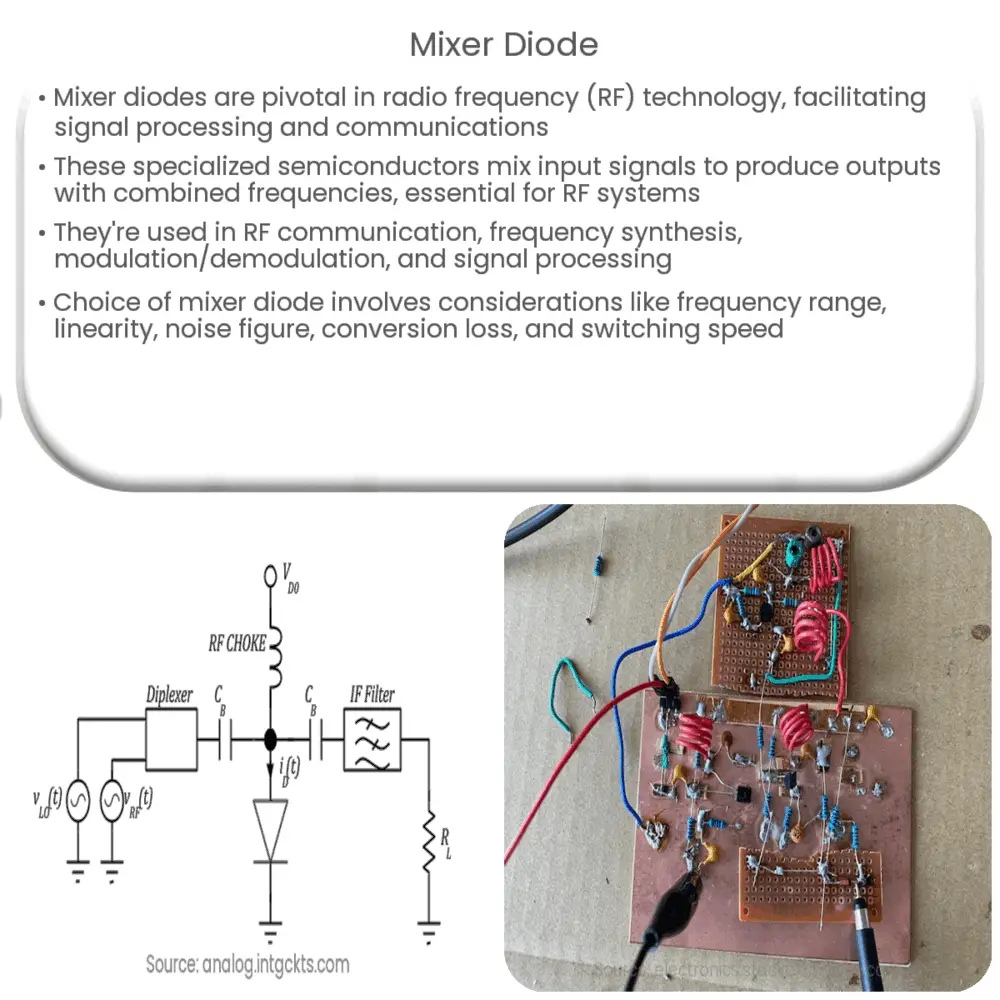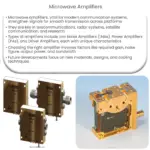Mixer diodes are essential semiconductor devices in RF technology, enabling frequency conversion, modulation, and signal processing in communication systems.

Mixer Diodes: The Unsung Heroes of Radio Frequency Technology
Introduction
Mixer diodes are essential components in radio frequency (RF) technology, playing a critical role in signal processing and communication systems. Despite their significance, mixer diodes often go unnoticed, overshadowed by more commonly discussed elements like transistors and amplifiers. In this article, we will explore the fundamentals of mixer diodes, their applications, and the various types available on the market.
What are Mixer Diodes?
A mixer diode is a specialized semiconductor device designed to facilitate the mixing or multiplication of two input signals, producing an output signal that contains the sum and difference of the input frequencies. This frequency conversion process is a fundamental building block in RF communication systems, enabling the transmission and reception of information across different frequency bands.
Mixer diodes exploit the non-linear behavior of their current-voltage (I-V) characteristics to achieve frequency mixing. This non-linear behavior allows for the generation of new frequency components, which are the mathematical combinations of the input signals. The output signal is then filtered and amplified to obtain the desired frequency for further processing.
Applications of Mixer Diodes
Mixer diodes are widely used in various applications related to radio frequency technology. Some common examples include:
- RF communication systems: Mixer diodes are integral to radio communication systems, enabling the conversion of high-frequency signals to intermediate or baseband frequencies for processing and vice versa.
- Frequency synthesis: Mixer diodes are employed in frequency synthesizers, which are used to generate a stable output frequency from a reference frequency. Frequency synthesizers are crucial in applications like radar systems, radio receivers, and test equipment.
- Modulation and demodulation: In communication systems, mixer diodes play a role in modulating and demodulating signals to facilitate the transmission and reception of information across different frequency bands.
- Signal processing: Mixer diodes are used in signal processing applications like phase detectors, mixers, and multipliers to perform various operations on RF signals.
Types of Mixer Diodes
There are several types of mixer diodes available, each with its unique properties and applications. Some common types include:
- Shottky diodes: Shottky diodes are known for their fast switching speeds and low forward voltage drop. They are widely used in RF mixers due to their excellent performance at high frequencies.
- Point-contact diodes: Point-contact diodes, also known as crystal diodes, are among the earliest diodes used in RF mixers. They consist of a small point of contact between a metal and a semiconductor, offering non-linear I-V characteristics suitable for mixing applications.
- Step-recovery diodes: Step-recovery diodes are specifically designed for high-frequency mixing and pulse generation applications. They exhibit a unique property called charge-storage, which allows for the generation of harmonics during the mixing process.
Factors to Consider When Choosing a Mixer Diode
When selecting a mixer diode for a specific application, several factors should be considered to ensure optimal performance. Some of these factors include:
- Frequency range: Choose a mixer diode with a frequency range that matches your application’s requirements. Different diode types are better suited for specific frequency ranges, so it is essential to consider the operating frequency when making your selection.
- Linearity: The linearity of a mixer diode affects the quality of the output signal, particularly in applications involving modulation and demodulation. Higher linearity results in lower distortion and improved signal integrity.
- Noise figure: The noise figure is a measure of the amount of noise added by the mixer diode to the input signal. A lower noise figure is desirable for applications requiring high signal-to-noise ratios, such as communication systems and radar applications.
- Conversion loss: Conversion loss refers to the difference in power between the input and output signals of a mixer diode. Lower conversion loss indicates better efficiency and improved performance.
- Switching speed: The switching speed of a mixer diode affects its ability to accurately process high-frequency signals. Faster switching speeds are essential for high-frequency applications, such as RF communication systems and frequency synthesizers.
Conclusion
Mixer diodes are indispensable components in radio frequency technology, enabling crucial operations such as frequency conversion, modulation, demodulation, and signal processing. With various types available, including Schottky diodes, point-contact diodes, and step-recovery diodes, it is crucial to carefully consider factors such as frequency range, linearity, noise figure, conversion loss, and switching speed when selecting the appropriate mixer diode for your application. By understanding the fundamentals of mixer diodes and their diverse applications, engineers can effectively harness their potential to design and implement advanced radio frequency systems and communication technologies.



